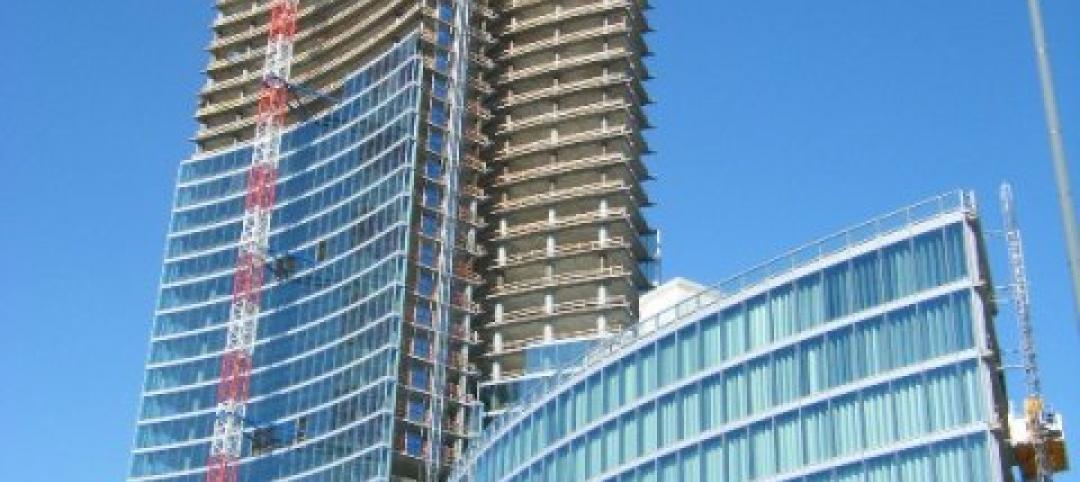The LED industry is in the midst of a rapid development cycle. In an effort to lengthen bulb lifetime, intensify colors, and create higher energy efficiencies, manufacturers are developing LEDs at an intense rate.
To help Building Team members sort through the new technological dimensions of LEDs, we asked two top-rated LED experts—John W. Curran, PhD, president of LED Transformations LLC, an LED industry consulting firm based in Stanton, N.J., and Glenn Heinmiller, principal of LAM Partners Inc., an architectural design firm based in Cambridge, Mass.—for their advice.
1. Pencil out the economics of LEDs. Building Teams should evaluate the economics of deploying LED luminaires. Cost savings come from two factors: energy efficiency and long life. The higher the electric utility rate for the application, the faster the payback. A long lifespan provides reduced maintenance costs resulting in additional savings. “The LED fixtures must last as long as assumed in the ROI calculations,” says Curran. “This is often where the economics for LED fixtures falls apart.” According to Curran, Building Teams must also be careful not to assume a lifetime that the fixtures do not deliver due to bad information from the fixture manufacturer or misapplication by the specifier or contractor.
2. Determine if LEDs are the right application for your building. “The answer depends on the specific lighting application, local electricity rates, operating hours, maintenance costs, and availability of utility incentives,” says Heinmiller. Building Teams should help owners explore the length of the payback period versus best energy performance regardless of upfront cost.
3. Consider the physical environment immediately surrounding the LEDs. Very high-temperature environments can present problems for LED technology. For example, installing highbays in an uncooled warehouse in Arizona may result in greatly reduced lifetimes for the LEDs. Those same highbays in a cold storage facility will perform much better.
4. Be aware that dimming is still a major problem with LEDs. Not all LED products can be dimmed, and those that can may not dim smoothly or to a low level. This is due to the widespread use of phase-cut dimmers in concert with conventional incandescent lighting and the drivers—the electronics—that power the LEDs. “It’s not easy to predict how a particular driver will perform against a wide range of dimmers already installed,” says Curran. Currently, there are no standards for LED dimming control, so only certain types of dimmers or dimming protocols will work with a particular LED fixture. “Dimming problems will probably improve some with technology development, but there are no signs the industry is standardizing on a dimming protocol,” says Heinmiller.
5. Test the LED color rendition. “The color rendering performance of white LED sources is generally quite good,” says Heinmiller. “Testing is important, especially for applications where color rendition is crucial, in order to make sure you are satisfied with the results.” Eventually, there will be an improved color metric that will predict quality more accurately from the specifications. Until then, Building Teams should advise clients to test color-critical applications.
6. Check out the fixtures with the manufacturer. Ask the LED manufacturer about their quality control and the type of testing done on their drivers. Deal only with reputable suppliers and manufacturers: What good is a 10-year warranty when the supplier goes out of business in a few years? Ask the supplier how they plan to provide replacement fixtures in 3 to 5 years.
7. Look for the Lighting Facts label. Go to www.lightingfacts.com to learn about a U.S. Department of Energy program that showcases LED products for general illumination from manufacturers who commit to testing products and reporting results according to industry standards. The LED Lighting Facts label can provide Building Teams with essential information for evaluating products and identifying the best options.
8. Go with a pro. For complex projects, engaging the services of a qualified professional architectural lighting designer could save your client—and you—a lot of money and grief. “It is a complex problem to determine the correct light source for the application in order to achieve the best energy efficiency and high lighting quality,” says Heinmiller. If you focus only on lower energy efficiency, you could end up with a lower electric bill but poor lighting in your building—or worse, no savings and poor lighting. For projects such as relamping existing track lighting in a retail store, working with a respected manufacturer’s representative who supports mockups and stands behind the supplier’s LED products is probably sufficient.
What are OLEDs?
Organic light-emitting diodes (OLED) are a separate branch of solid-state lighting that are beginning to have an impact on the architectural lighting industry. “The major performance difference between LEDs and OLEDs is that LEDs are point light sources while OLEDs are area sources,” says Curran, president of LED Transformations. LEDs are much further ahead in regard to cost, higher efficiencies, and longer lifetimes. Currently, OLEDs are used in cell phone displays and a small but growing number of high-end designer lighting fixtures.
Learn more about LED standards
• ANSI C78-377-2008 Specifications for Chromaticity of Solid-State Lighting Products for Electric Lamps. ANSI C78-377-2008 provides a standard for qualifying the range of colors that can be classified a particular color temperatures.
• LM 79-08 Approved Method: Electrical and Photometric Measurements of Solid-State Lighting Products. LM 79-08 gives the proper test procedure to evaluate light distribution and power consumption for an LED fixture. LED fixtures require special testing (using absolute photometry) because LED light sources, unlike traditional sources, cannot be tested independent of the fixture due to thermal effects on performance.
• LM 80-08 Approved Method for Measuring Lumen Depreciation of LED Light Sources; and TM-21-11 Projecting Long-Term Lumen Maintenance of LED Sources. LM-80-08 and TM-21-11 provide guidance on measuring and predicting the lumen depreciation of LED devices, which yields an estimate of useful lifetime.
Related Stories
| Jan 10, 2013
Guide predicts strongest, weakest AEC markets for 2013
2013 Guide to U.S. AEC markets touts apartments, natural gas, senior housing and transmission and distribution.
| Jan 9, 2013
Panasonic and Bluebeam preview new architect app at CES 2013
Panasonic and Bluebeam Software collaborate to develop and introduce the 4K tablet and software to the design and construction industry.
| Jan 3, 2013
Answered prayers
A bold renovation enables a small church to expand its mission on a grand scale.
| Jan 3, 2013
Top BIM/VDC articles of 2011-2012
A compendium of BD+Cs top building information modeling and virtual design + construction articles from 2011-12.
| Jan 3, 2013
8 trends shaping today’s senior housing
The ranks of those age 65 and older are swelling by the thousands every day. Is there an opportunity for your firm in the seniors housing market?
| Jan 2, 2013
Trends Report: New facilities enhance the quality of campus life
Colleges and universities are building state-of-the-art student unions, dining halls, and other non-academic buildings to enrich the campus experience, boost enrollment, and stay competitive.
| Jan 2, 2013
M&A activity at U.S. AEC firms up slightly
Total mergers and acquisitions in the AEC industry hit 171 in 2012, up slight from the 169 deals in 2011.
| Jan 2, 2013
Global data center market to ‘slow’ to 14.3% this year
Total global investment in data centers is expected to slow down somewhat this year but still increase at a respectable 14.3%, according to DCD Intelligence.
| Jan 2, 2013
Construction jobs made gains in 2012, even with a slow Q4, says Gilbane report
The construction sector in the nine states with 50% of construction employment was up 169,000 jobs from February to September 2012, following a lost of 137,000 jobs from September 2011 to January 2012.
















